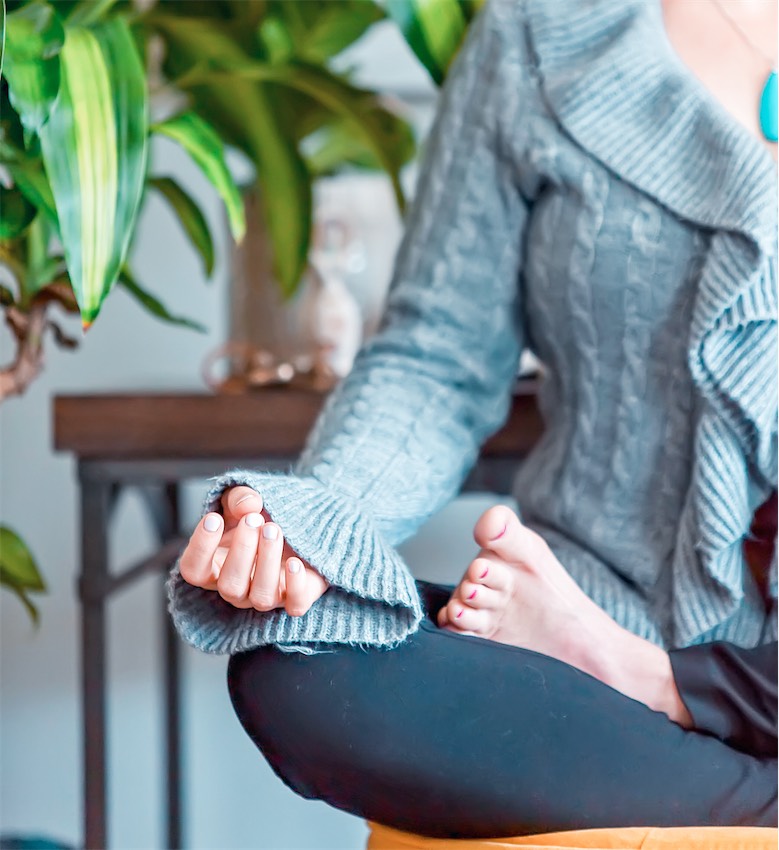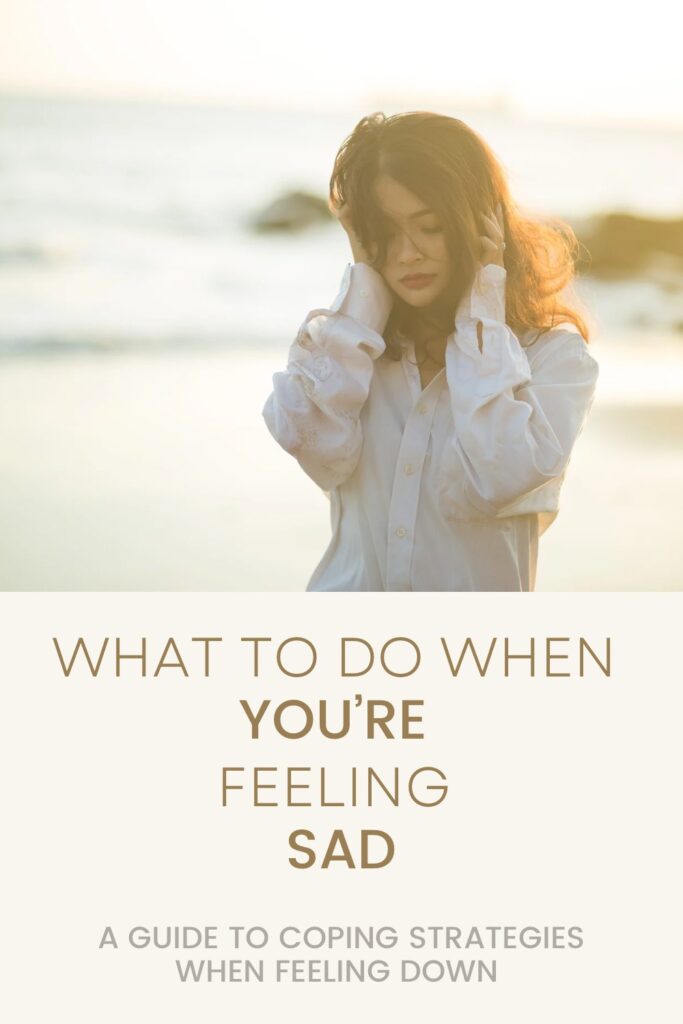Last updated on at 05:45 am
We’ve all been there – those days when the weight of the world feels a little heavier, and the skies seem a bit grayer. It’s okay; we’re human, and it’s entirely normal to feel a wave of sadness now and then. The crucial question is: what do you do when you’re sad? Let’s explore some effective coping strategies to help you weather the storm.
Understanding Sadness
Before diving into coping strategies, it’s essential to acknowledge that sadness is a natural emotion. It’s okay to feel down from time to time; it doesn’t diminish your strength or resilience. Understanding that these emotions are part of the human experience is the first step in navigating through them.
1. Embrace Mindfulness and Meditation
One powerful way to manage sadness is through mindfulness and meditation. Deep, mindful breathing can help calm your nervous system. Taking a few minutes each day to focus on your breath, observe your thoughts without judgment, and be present in the moment can significantly reduce feelings of sadness. Try techniques like diaphragmatic breathing or box breathing to bring a sense of calm during moments of sadness. Numerous apps and online resources offer guided meditation sessions, making it easy to incorporate into your routine.

Actionable Tip: Try dedicating just 5-10 minutes each day to mindfulness exercises. Gradually extend the duration as you become more comfortable with the practice.
2. Connect with Nature
Spending time outdoors and connecting with nature can have a rejuvenating effect on your mood. Take a walk in the park, sit by a river, or simply enjoy the beauty of a sunrise or sunset.
Related Read: Summer Bucket List Ideas – 100+ Fun Activities
3. Practice Gratitude
Reflecting on the positive aspects of your life and expressing gratitude can shift your focus from what’s causing sadness to what brings joy. Consider keeping a gratitude journal to regularly note down things you are thankful for.
4. Move Your Body
Physical activity is a natural mood booster. Whether it’s going for a run, practicing yoga, or even just dancing to your favorite music, moving your body can release endorphins, which are known as “feel-good” hormones.
5. Journaling Your Way to Healing
Journaling is a therapeutic outlet that allows you to express your thoughts and feelings freely. When you’re sad, putting pen to paper (or fingers to keyboard) can be incredibly cathartic. Write about your emotions, what triggered them, and any patterns you notice. It can provide valuable insights and serve as a release valve for pent-up emotions.
Actionable Tip: Start a daily journaling habit. Set aside a specific time each day to reflect on your feelings and experiences.
6. Limit Social Media
While staying connected is essential, excessive time on social media can sometimes contribute to feelings of inadequacy or sadness. Consider taking breaks from social media to focus on real-life interactions and experiences.
Related Read: Digital Detox – How to Unplug and Recharge, A Step-by-Step Guide
7. Create a Comforting Environment
Surround yourself with things that bring you comfort and joy. This could be lighting your favorite scented candle, cuddling up with a cozy blanket, or listening to soothing music.
8. Set Small Goals
Break down tasks into smaller, more manageable goals. Achieving even minor accomplishments can provide a sense of productivity and boost your mood.
9. Practice Self Compassion
Treat yourself with the same kindness and understanding you would offer to a friend. Recognize that everyone goes through difficult times, and it’s okay to prioritize self-care.
10. Engage in Creative Activities
Creativity has a unique way of lifting our spirits. Whether it’s painting, writing, playing an instrument, or any other form of artistic expression, engaging in creative activities can be a powerful antidote to sadness. It allows you to channel your emotions into something positive and fulfilling.
Actionable Tip: Pick up a creative hobby you’ve always wanted to try. It could be as simple as sketching, cooking, or learning to play a musical instrument.
11. Engage in Laughter Therapy
Laughter is a powerful stress reliever. Watch a funny movie, attend a comedy show, or spend time with people who bring joy and laughter into your life.
12. Seek Support from Loved Ones
Connection is a fundamental human need, especially during tough times. Reach out to friends or family members you trust and share your feelings with them. Sometimes, talking about what you’re going through can provide emotional relief, and their support can be a comforting anchor.

Actionable Tip: Initiate a conversation with a friend or family member. Let them know you’re going through a tough time and would appreciate their company or a listening ear.
13. Consider Professional Help
If your sadness persists or intensifies, seeking the help of a mental health professional can be beneficial. Therapy provides a safe space to explore and address the root causes of your emotions.
FAQ: How do you get rid of feeling sad?
You can get rid of feeling sad by focusing on positive activities: engage in hobbies, connect with loved ones, practice mindfulness, and exercise. Challenge negative thoughts, prioritize self-care, and consider seeking professional support if needed. Remember, it’s okay to ask for help and take steps towards a healthier mindset.
Conclusion
When you’re feeling sad, remember that you’re not alone, and there are constructive ways to navigate through the storm. Taking proactive steps toward self-care is a valuable investment in your overall well-being.
Embrace mindfulness, journal your thoughts, indulge in creative pursuits, and lean on the support of your loved ones. These coping strategies can make a significant difference in your journey towards healing and resilience.
Take note that it’s essential to find what works best for you, as different strategies resonate with different individuals. Experiment with these tips, and don’t hesitate to combine or modify them based on your preferences and needs.
Remember, it’s okay not to be okay sometimes, and taking proactive steps to address your emotions is a sign of strength, not weakness. So, the next time you find yourself wondering what do you do when you’re sad, try incorporating these strategies into your routine. You might be surprised by the positive impact they can have on your well-being.
📌 Pin to Save 📌

Follow me on:





I’m loving this post! I’m from “Blogging For New Bloggers” too. I’ve been a little down the last few weeks myself. I’m trying all of these things though and they seem to be helping little by little. I’ve found that laugh therapy is my favorite. Thank you for sharing.
Glad to know you love it. Laughter is my go-to cure, too. I read funny books or watch funny movies and I always feel much better after. Hang in there. I’ve realized that all things come to pass.
These are great tips. I love meditation exercises and practicing gratitude
These are all great strategies. I practice many of these things daily. Thanks for sharing this post!
love your post it is so hard at times to get by but as you shared there are many things that we can do. thanks again for sharing
This was so helpful! Thank you!